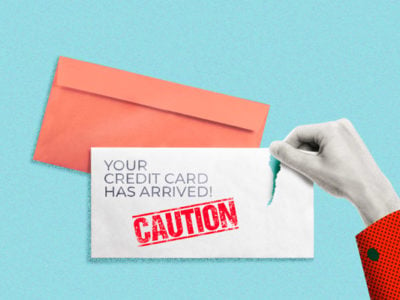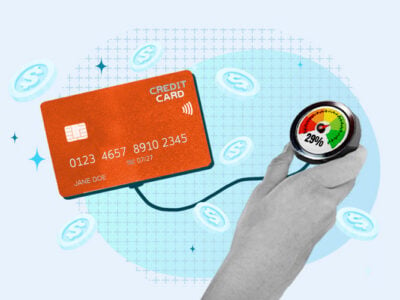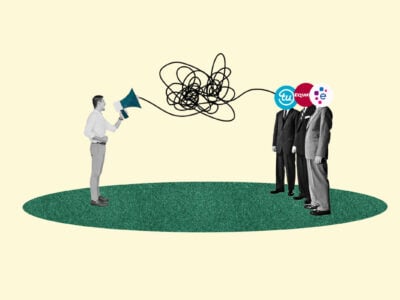Table of Contents
1. Create a budget
There are many reasons why you might be having problems with too much credit card debt. Maybe you spent carelessly in the past, or maybe you’ve fallen on hard times or have been hit with unforeseeable expenses.
Either way, to get out of debt, you need to know how much income you have and how much you’re spending. Sit down and figure out how much you make each month and where it all goes. You may have to keep track of your expenses for a few weeks to figure this out.
If it turns out that you’re spending more than you make, you have two options:
- Find a way to increase your earnings.
- Reduce your spending.
To increase your earnings, you can get a second job or find an additional source of income. If that ends up being impractical, you’ll just have to spend less.
Fortunately, there are plenty of online tools, such as Mint and YNAB (You Need a Budget), that you can use to manage your finances. Depending on your debt and income, you may need to make some dramatic changes to your life, like finding a new place to rent, getting a roommate, or simply cooking at home more and cancelling some of your subscriptions.
Limit your spending to cash purchases
In general, using your credit cards regularly is a good idea because it adds to your payment history and builds your credit. However, research suggests that only using cash makes you less likely to overspend. If you carry only cash and leave your credit cards at home, you might end up saving money. 1 Try it for a few weeks and see if it works for you.
2. Don’t miss payments or underpay
To get out of credit card debt, you’ll need to be determined about keeping on top of your credit card bills. Here are a couple of strategies that might make this easier:
Automate your payments
It can be easy to forget when your credit card payments are due, but not paying your credit cards will have major consequences. Unfortunately, late payments can lead to extra fees and penalties, as well as a major drop in your credit score. Consider setting up automated payments to make sure you never miss a bill.
When you’re enrolled in autopay, you’ll need to be extra vigilant about watching out for fraudulent credit card charges. If someone steals your credit card and uses it, it might be harder to get your money back from your issuer if you accidentally autopay the bill before disputing the charges, and you’ll probably have to wait longer to get reimbursed. 2
Pay more than the minimum
Lenders charge you interest on your outstanding debts. The longer you take to pay them back, the more money you have to pay in the end. To pay off your credit card debt faster, aim to pay more than the minimum amount that your credit card issuer requires.
Don’t believe the myth that leaving a balance on your credit card will help your credit score. VantageScore and FICO have confirmed that it isn’t true. 3 4 Doing so will cost you more money in interest and could make it more difficult to keep on top of your payments in the long term.
3. Choose a payment strategy
Having a clear strategy will help you stay on track. Of course, whichever payment strategy you choose, it’s important that you continue to make the minimum payment on all of your accounts.
There are two main ways to pay off credit card debt:
The snowball method
The snowball method is a way of paying off your debts in order of size, going from smallest to largest. Because this allows you to completely clear your smaller debts more quickly than other methods, it can help you stay on track—each time you get rid of a debt, it provides a little boost of motivation to pay off the others.
The snowball method is a good approach if you have debts across a lot of accounts and you’re finding them overwhelming to manage.
The disadvantage is that this isn’t the most efficient method, mathematically speaking. If you pay off your debts according to their interest rates (as in the next method), you’ll pay less money overall. 5
The avalanche method
With the avalanche method, you pay off your debts starting with the account that has the highest interest rate. Once it’s paid off, you proceed to the one with the next-highest interest rate, and so on.
When you prioritize paying off the debts that are accumulating the most interest, you end up paying less overall. As a result, the avalanche method is more efficient than the snowball method. However, the avalanche method has one disadvantage: it can take a while to pay off that first debt, so it can be hard to stay motivated.
If you choose to try the avalanche method, consider trying to lower your credit card APR that’s the highest, making it easier to tackle.
4. Consolidate your debts
Debt consolidation is a debt management strategy where you combine multiple debts into one.
Consolidating your debts has pros and cons; for example, debt consolidation hurts your credit temporarily. But the main appeal is that it makes it easier to pay back your debts by reducing the number of payments you need to make each month and (potentially) reducing your interest rate.
There are two common methods of debt consolidation:
Do a balance transfer
If you have multiple credit cards with high interest rates, then consider transferring your debts to a single credit card with a relatively low interest rate. This is known as a balance transfer.
Many companies that offer balance transfer credit cards will offer you a 0% APR for a period of time after you open the account. If possible, find a card that offers a long 0% introductory period—preferably 15 to 18 months.
Note that balance transfer fees are common. 6 For example, if your new credit card charges a 3% fee for a balance transfer of $1,000, you will pay $30 in fees for your transfer. Make sure that this isn’t more than you’d ultimately save in interest charges.
Get a debt consolidation loan
If you have a lot of different debts you’re trying to pay off, you can take out a debt consolidation loan to combine them into a single debt. You can get these loans from banks, credit unions, or private lenders.
A debt consolidation loan is a type of installment loan, meaning you’ll receive an initial lump sum and then repay it over a set period of time. Immediately after taking out the loan, you’ll use the money to pay off all your debts. After that, you’ll only need to worry about paying back the loan itself.
Debt consolidation loans can be very useful tools, but they have certain disadvantages. For instance, even if the loan starts out with a low interest rate, your lender might increase it after you’ve had the loan for a while. 6 They may also charge you an origination fee. What’s more, if the loan’s term is long, you might end up paying more to clear your debts in the end, even if your monthly payments go down. 7
Before taking out a debt consolidation loan, review the loan’s terms, sit down with a calculator, and make sure that it’s really a good financial decision.
5. Consider getting help from a credit counselor
If you need help with credit card debt, you can contact a credit counselor. Credit counselors are advisors with training in consumer credit, personal finance, and debt management.
When you visit a credit counselor, they’ll discuss your financial situation with you and help you come up with a budget. They may also recommend enrolling in a debt management plan.
To find out whether a credit counseling organization is legitimate, consult your state attorney general or State Consumer Protection Agency.
The Financial Counseling Association of America and the National Foundation for Credit Counseling are legitimate credit counseling organizations, so those are good places to start.
Information about credit counseling services should be freely accessible.
A reputable credit counseling agency should send you free information about itself and the services it provides without you needing to pay or provide details about your situation. If they don’t do this, then look elsewhere for help.
If you’re not sure about credit counseling, you can set up an initial consultation to talk over your options. Many agencies will give you at least one session for free so that you can decide whether their services are right for you. Credit counseling doesn’t hurt your credit, so there’s no harm in taking at least this first meeting.
6. Consider credit card debt relief
If your debt problems are so extreme that none of the other suggestions here are likely to help, there are a few types of debt relief you can consider, including:
- Hardship assistance programs
- Debt settlement/credit card debt forgiveness
- Bankruptcy
Hardship assistance programs
If you’re really struggling with your bills and need a way to pay off credit card debt even though your income isn’t sufficient, then contact your card issuer to negotiate your credit card debt. Creditors sometimes provide hardship assistance programs (also called “accommodations”) in situations like this. 8
To find out whether you’re eligible, reach out to your lender proactively. They may be able to help you to: 9
- Delay your credit card payments
- Lower your credit card payments
- Avoid interest charges
- Avoid incurring negative marks on your credit reports
- Build a longer-term plan that lets you pay back your debt over an agreed-upon period at a lower interest rate
Debt forgiveness / debt settlement
A debt forgiveness program allows you to clear your debts without paying them. 10 Some jobs offer student loan debt forgiveness programs, but genuine credit card debt forgiveness is relatively rare. This means that most of the time, when people talk about debt forgiveness in the context of credit cards, they’re really talking about debt settlement.
When you negotiate a debt settlement, your creditor agrees to clear your debts in exchange for less than you owe—in other words, for a smaller (but nonzero) amount. For instance, they might allow you to pay just 50% of your outstanding debt and waive the rest, figuring that receiving 50% is better than receiving nothing.
You have two options if you want to settle your debts:
- By going through a company: If you choose to use a debt settlement company, they’ll negotiate with your creditors on your behalf. They will probably encourage you to stop sending payments for your credit card bills.
- By doing it yourself: You can also try to negotiate a debt settlement yourself. You can contact your credit card company via the telephone number on your card or your statement.
Debt settlement has certain downsides:
- Damage to your credit score: Settled debts appear on your credit report and harm your credit score because the major credit scoring companies, FICO and VantageScore, want to encourage people to pay their debts in full.
- Penalties and lawsuits: Debt settlement companies will often ask you to completely stop making payments on your debts for months or years. This can lead to extra fees or penalties and potentially even lawsuits. 11
- Potential tax liability: Forgiven and settled debt can be counted as taxable income on your federal income taxes. 12
- Risk of failure: Lastly, debt settlement isn’t guaranteed to work. Your creditor isn’t obligated to accept your terms, and they might insist on a full repayment.
Despite these downsides, debt settlement might be your best option if you’re already a long way behind on your credit card bills and realistically can’t pay your debts in full.
Bankruptcy
Bankruptcy is a chance to start again when your finances have collapsed. It severely damages your credit score, but it provides immediate debt relief.
There are two main types of bankruptcy (known as bankruptcy chapters) that are available if you need to clear your personal debts:
- Chapter 7 bankruptcy (liquidation bankruptcy): The court decides to discharge certain debts, meaning you’re no longer legally required to pay them. However, you first have to liquidate (sell off) a lot of your assets (possessions) to pay off as much debt as possible. 13
- Chapter 13 bankruptcy (reorganization/rehabilitation bankruptcy): In this case, you don’t have to liquidate your assets, but you do have to make a plan to repay some of your debts over the next three or five years. 14 It’s possible that only some of your debts will be discharged, but you’ll get a reprieve from collection attempts.
If you’re considering this option, you should carefully weigh the pros and cons of a chapter 7 vs. a chapter 13 bankruptcy. Chapter 13 involves a longer commitment and doesn’t completely clear your debts, but it’ll also come off your credit report 3 years earlier than a chapter 7 bankruptcy will. 15
7. Stay motivated
You won’t be able to pay off your debt overnight, so it’s important to stay focused and not give up. Here are a few tips and success stories to help you stay on track:
3 tips to get (and stay) motivated
- Don’t give in to financial denial: Financial denial is a coping mechanism where, instead of dealing with your financial issues, you avoid them. For instance, you might stop tracking your spending or reading your billing statements. This is a common reaction to debt, but it goes without saying that it’s counterproductive. If you catch yourself slipping into financial denial, do your best to recognize it and reevaluate your behavior.
- Enlist your friends to help you: Paying off debt is a bit like dieting. It’s much easier when you get encouragement and support from others. If you have friends or family who are also working to get out of debt, you can share your progress to motivate each other.
- Keep things in perspective: Remember that there’s always a way out. Even in the worst-case scenario, you can still file for bankruptcy. People do this all the time—sometimes more than once—and it can be an appropriate financial decision. It’s easy to get stressed about debt and feel like you’ll never be able to overcome it, but you can and will.
Motivate yourself by reading success stories
Paying off credit card debt can be a long and stressful process. It can be helpful to read about other people’s debt repayment journeys to get inspired.
Some of the people in the stories below had to make major spending cuts and take other drastic measures. However, they all succeeded in paying off their debts in the end.
Debt repayment success stories
- Slashing rent and taking on odd jobs: This story details how one person with $90,000 of student debt paid off everything in three years with careful budgeting, cost-cutting, and a variety of side gigs, from mystery shopping to babysitting.
- Using the snowball method: How one graduate covered the cost of his MBA by starting repayments early, making extra payments, and using the snowball method.
- Getting into financial assistance programs: How one financial journalist paid off $150,000 of medical debt and student loans by negotiating lower interest rates, putting their loans on autopay, and looking for other ways to cut costs.
- Getting creative to spend less and earn more: Twelve people talk honestly about how they repaid their debts.
Takeaway: You can get out of credit card debt with determination and a sound financial strategy.
- Clearing your credit card debt can be very challenging, but it’s doable. Make a budget to help you plan how you’re going to pay back your debts.
- Use tried-and-tested payment strategies. The snowball method is easier to stick to, but the avalanche method is more efficient.
- If you’re struggling, consider getting help from a nonprofit credit counseling agency.
- If you’re completely overwhelmed, consider debt relief options that might be suitable for your situation, such as hardship assistance programs, debt settlement, or bankruptcy.







